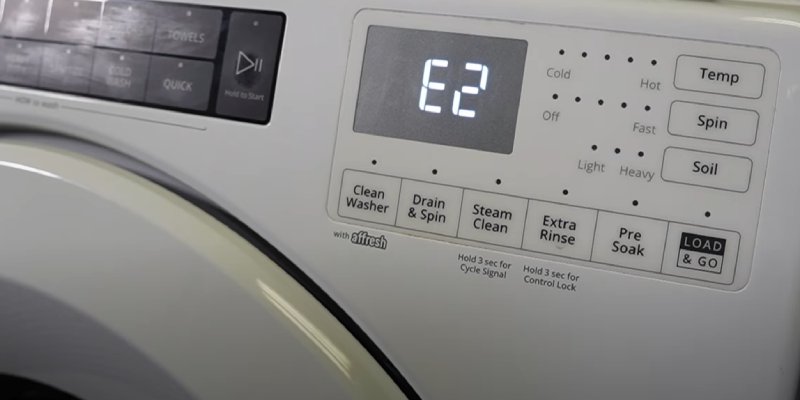
Imagine your washing machine as an orchestra, where each part plays a crucial role in perfect harmony. The water level sensor acts as the conductor, ensuring all other components work in sync. When it detects there’s something off about how water is filling, it triggers the “LE” error. The good news? You don’t have to be a tech wizard to prevent this from happening. Just a few proactive steps can keep your machine humming along smoothly, similar to how regular oil changes keep your car’s engine running.
Understanding What Causes the “LE” Error Code
You might be wondering, “What exactly causes this frustrating error?” Well, let’s break it down. The “LE” code is often triggered by issues related to water supply and the machine’s ability to determine when it’s time to stop filling. Think of it as your machine’s version of a “check engine” light in a car. It doesn’t always mean something major is wrong, but it does signal that some attention is needed.
One common cause is a kinked or blocked water inlet hose. Picture trying to drink from a straw that’s been pinched — frustrating, right? Water can’t flow properly and your machine gets confused about how much is entering. Another reason could be a damaged water level pressure switch, which is the part responsible for sensing how much water is in the drum. If this switch thinks there’s more or less water than there actually is, the “LE” error pops up to let you know.
Other factors could be linked to electrical issues, like a faulty main control board or problems with the water inlet valve. These components are akin to the central processing unit of a computer; if they’re not functioning properly, the entire system can go awry. Once you understand these causes, it becomes easier to prevent them, like knowing not to leave your phone out in the rain to keep it from shorting out.
Simple Steps to Prevent Future “LE” Errors
So, how do you keep the dreaded “LE” error at bay? It starts with some good old-fashioned vigilance and maintenance. Regularly inspecting your water inlet hoses for kinks or blockages is a straightforward way to start. Imagine them as the lifeline for your machine — keeping them clean and untangled ensures water flows freely, reducing the risk of any hiccups.
Next, it’s a wise move to maintain the water level pressure switch. Just as you’d make sure your car’s gas gauge is accurate, ensuring this component is functioning correctly keeps your machine informed about the right amount of water. If you’re up for some light detective work, you can check for any visible signs of damage or corrosion around these parts.
Lastly, be mindful of the load size. Overloading the washer can lead to a cascade of issues, overworking the motor and confusing the water level sensors. It’s akin to stuffing a suitcase until it’s about to burst — not a good idea. By keeping loads balanced and manageable, you enhance the longevity of your washer and minimize the risk of errors.
Regular Maintenance: A Key to Prolonged Washer Health
Just like scheduling regular health check-ups keeps you in tip-top shape, setting aside time for routine maintenance can do wonders for your Whirlpool washer. Maintenance isn’t just a chore; it’s an investment in your appliance’s future. It ensures that everything’s running as it should, much like a well-tuned instrument.
Start by routinely cleaning your washer’s drum and keeping the exterior free from dust and grime. This might sound trivial, but a clean environment prevents potential malfunctions and keeps things running smoothly. You might also consider occasionally running an empty hot wash with vinegar. This is like giving your washer a detox; it helps eliminate soap scum and any built-up gunk that might be lurking.
Also, keep an ear out for unusual noises or vibrations. These can sometimes signal that something’s off. It’s much like listening for the sound of rain to know if you need an umbrella. If anything seems amiss, addressing it promptly can prevent minor issues from ballooning into major problems.
What To Do If the Error Occurs Again
Even with the best preventive measures, sometimes that “LE” error might pop up again. Don’t panic — it’s not the end of the world. First, try resetting your washer. Unplug it for a few minutes and then plug it back in. It’s like rebooting your computer when it starts acting up; sometimes, a fresh start is all it needs.
If resetting doesn’t do the trick, it might be time to call in a professional. Think of them as your washer’s personal doctor. They can diagnose what you can’t and provide specific solutions, ensuring everything gets back to working order.
Remember, regular upkeep is your best friend in keeping the “LE” error at bay. And with these tips, you’re now well-equipped to handle any hiccups along the way. Happy washing, and may your laundry days be smooth and error-free!